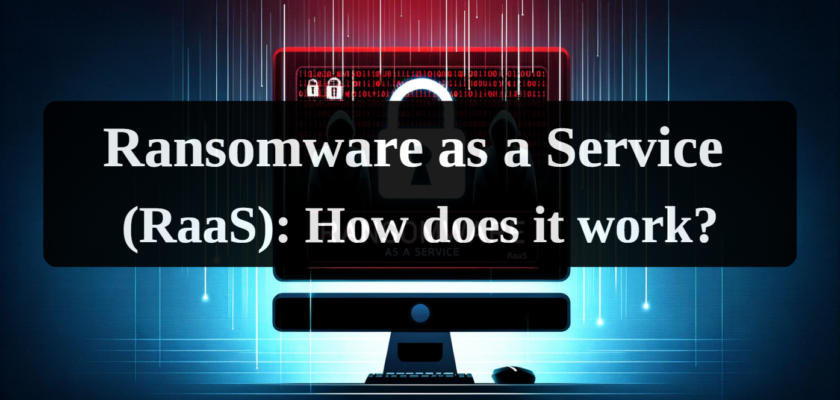Ransomware as a Service (RaaS) represents a model of providing tools for cyberattacks, combining elements of ransomware with the principles of ‘as a service’. This model has allowed a wider range of individuals, including those without deep technical knowledge, to carry out complex cyberattacks. RaaS has significantly simplified the process of carrying out cyberattacks, making them more accessible and diverse. However, it is important to understand that RaaS itself is not a threat; it is a channel or tool that cybercriminals can use to create and distribute malware.
Historically, RaaS began to develop in the mid-2010s when the first versions of malware, such as CryptoLocker, proved profitable. This led to the creation of the RaaS model, which allowed malware developers to offer their services to a wide range of offenders, including those without high technical skills.
What is Ransomware as a Service?
RaaS functions as a platform where operators develop and provide tools for ransomware attacks, and affiliates or partners are responsible for their distribution. RaaS operators offer various financial models to their affiliates, including monthly subscriptions, commissions from ransom amounts, one-time licensing fees, and profit-sharing. This flexibility in revenue models makes RaaS attractive to a wide range of cybercriminals, from independent hackers to organized criminal groups.
Examples of well-known RaaS include Hive, DarkSide, REvil, and Dharma. These groups have become known for their large-scale and complex attacks on various organizations and industries. For example, Hive attacked Microsoft Exchange Server clients, DarkSide was linked to the CARBON SPIDER cybercrime group, and REvil (or Sodinokibi) became known for one of the largest ransom demands in history – $10 million.
Impact of RaaS on the Evolution of Cybercrime
RaaS has had a significant impact on the field of cybercrime, changing its appearance and dynamics. The main impact of RaaS is that it significantly lowers the entry threshold for potential offenders, allowing even those without high technical skills to carry out complex attacks. This leads to an increase in the number of attacks and an expansion of potential targets.
RaaS also promotes innovation in the field of cybercrime. RaaS operators continuously develop new and more sophisticated variants of malware, ensuring their updates and adaptation to changing cybersecurity conditions. This leads to the emergence of more complex and hard-to-detect threats, requiring cybersecurity professionals to constantly update their knowledge and defense methods.
Technical Aspects of RaaS
The technical aspects of RaaS include the entire chain of actions, from creating and supporting malware to managing infrastructure and processing payments. The RaaS operation process may include the development of customizable malware, which is then provided to affiliates for distribution.
One of the key aspects is the diversity of RaaS distribution methods. These can be phishing emails, exploiting software vulnerabilities, social engineering, and other methods. The effectiveness of RaaS lies in its ability to quickly adapt to new defensive measures, using various methods to achieve its goals.
These technical aspects highlight the complexity and variability of the RaaS threat, requiring organizations and cybersecurity professionals to constantly pay attention and adapt to new challenges.
Methods for Combating Threats
Combating Ransomware requires a comprehensive approach, including both technical and organizational measures. Effective protection includes:
- Applying multi-layered protection: Using antivirus programs, firewalls, intrusion detection and prevention systems (IDS/IPS), and other cybersecurity tools.
- Regularly updating software and systems: Eliminating vulnerabilities through timely updates of software and operating systems.
- Training staff: Increasing employee awareness of cyber threats and training in phishing attack recognition methods.
- Data backup: Creating backups of important data to minimize losses in case of a successful attack.
- Applying strict access policy: Limiting access to important systems and data, minimizing the use of privileged accounts.
Conclusion
Ransomware as a Service (RaaS) as a business model, offering tools for conducting cyberattacks, has had a significant impact on current methods and approaches in the field of cybersecurity. This model facilitates the conduct of cyberattacks, making them more accessible to a wide range of offenders, including those who do not have high technical skills. As a result, RaaS intensifies the need for constant updating of knowledge about cyber threats and the development of strategies to prevent them. Organizations need to strengthen their cybersecurity systems and improve preparedness for potential incidents to reduce risks and minimize damage from potential attacks.

